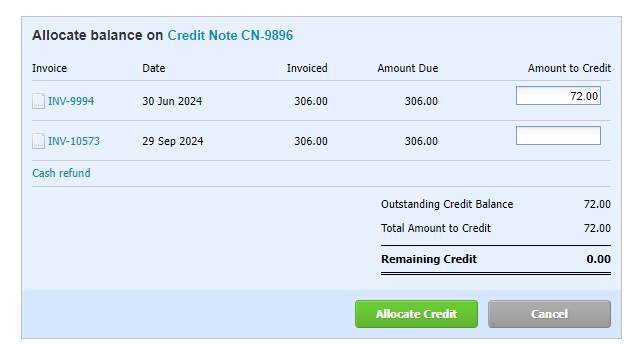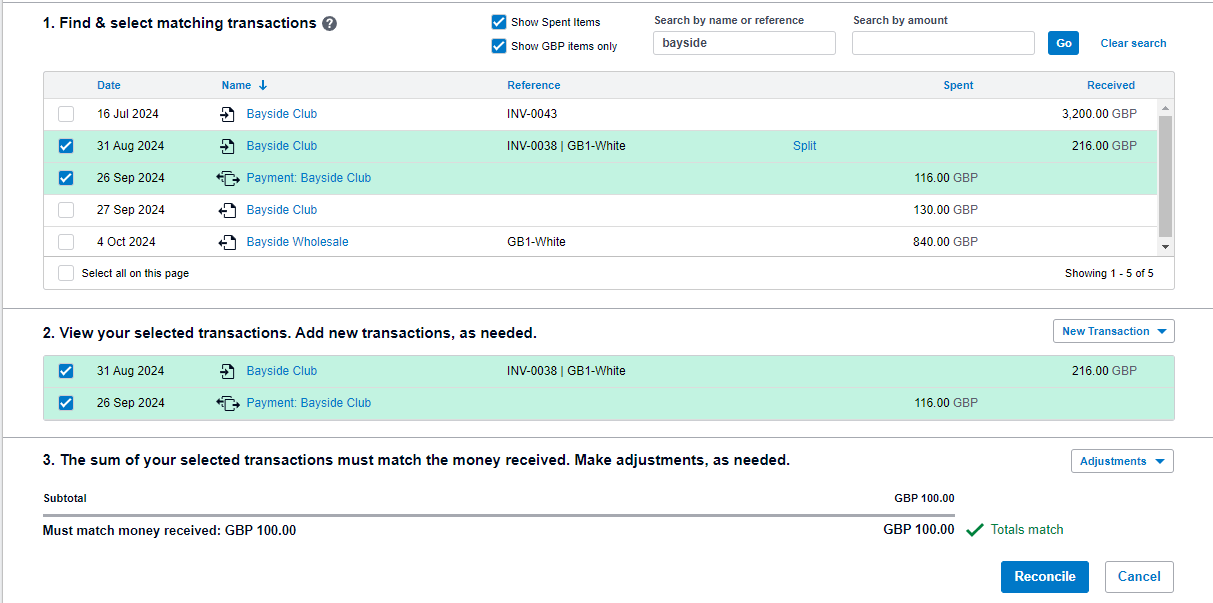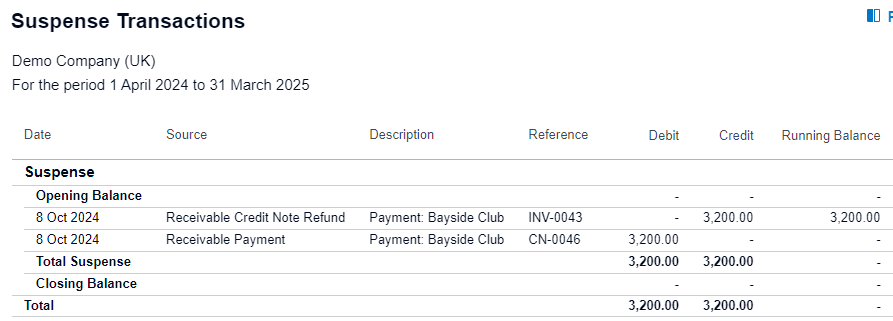Why is Xero locked?
When we are working on your year end accounts, we lock Xero as at the year end date. This fixes the financial data in Xero for the period up to that date, in order to prevent any changes to transactions in that period. This ensures the figures are accurate and are not amended in error, and also helps us ensure Xero matches your year end accounts.
How can I allocate a credit note in a locked period?
Xero will enable you to allocate a new credit note to an invoice in a locked period. When you approve the credit note, Xero will prompt you to allocate the credit balance to the relevant invoice. Simply enter the amount of the credit to apply to the invoice in the ‘To apply’ box and click on the green ‘Allocate credit’ box.
In the same way, Xero will also enable you to allocate a new invoice to a credit in a locked period. Again, once you have approved the new invoice, click ‘Apply credit’ and enter the amount of the credit to apply to the invoice in the ‘To apply’ box. Complete the allocation by clicking the green ‘Apply’ box.
You can also allocate a credit note in a locked period to an existing invoice not in a locked period, or vice versa. The easiest way to do this is to go into the relevant contact and select the credit note. In the credit note options drop down box, select ‘allocate credit’. On the following screen, enter the amount of the credit you wish to allocate against the relevant invoice, and click on the green ‘Allocate credit’ button.

What if the credit note and invoice are both in a locked period?
Unfortunately Xero will not enable a credit note and invoice which are both in a locked period to be allocated against each other.
There are two ways around this, however, without the need to unlock xero, as follows:
Example 1 – via the bank reconciliation.
In this example, an invoice for £216 was raised on 16th July, and a credit note of £116 was raised on 31st July. Xero is locked to 31st July, and therefore the credit and invoice are both in the locked period and cannot be allocated against each other.
The customer pays £100, after the locked period, being the value of the original invoice less the credit note.
The invoice, credit note and bank receipt can all be matched off together on the bank reconciliation.
In order to do this, firstly a cash refund must be recorded against the credit note. This is because a credit note will not appear on the bank reconciliation, but a cash refund will. Select the credit note and at the bottom, complete the ‘make a cash refund’ details and click’ Add Refund’ as shown below:

Note that I have entered the same payment date and bank account as the customer receipt.
In the bank reconciliation, select the correct customer receipt, and choose ‘match’ in order to match up the invoice and credit note (now cash refund) to the bank receipt. (You can search for the relevant customer to make the search easier.) Ensure the box ‘Show Spent items’ is ticked. This will then bring up the cash refund which you have posted against the credit note, along with the invoice to match off against the bank receipt.

For a bill and supplier credit note, it works the same way, by posting a cash refund at the bottom of the supplier credit note, and then selecting ‘show received items’ on the bank reconciliation to bring up the supplier bill and cash refund allocated to the supplier credit note, in order to allocate them to the net payment to the supplier.
What if the credit note and invoice are both in a locked period and there is no customer receipt or supplier payment due?
Finally, if all other options above are not available, an invoice and credit note of the same amount in a locked period can be matched off by paying both off to a suspense account.
Firstly, in the chart of accounts ensure a current liability account is set up called ‘suspense account’ with an account code of for example 9999, which will therefore not be confused with any other account. The account should be set up as default ‘no VAT’ and the option ‘ enable payments to this account’ selected.

Select the invoice, and click ‘add payment’ at the top right. Enter the relevant amount to be allocated against the credit note, selecting the suspense account as the payment account.
The credit note reference can be used as reference to the payment of the invoice.

Then, select the credit note, and at the bottom, make a cash refund for the same date and value, paid from the suspense account, with the invoice as reference.

The contact will now show both the invoice and credit note as paid, and the suspense account will show the matching invoice and credit note applied and therefore no net balance.

Read more of our tips for using Xero and if you need help with this, or with other advice, then please get in touch with our accounting team.